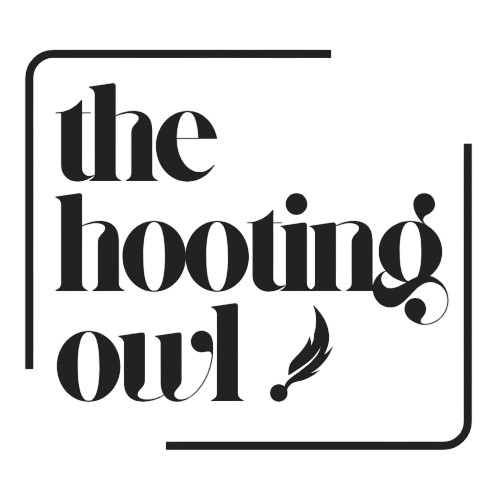When I am in between books, I like to read short stories. I used to find all of my short fiction on acclaimed mainstream magazines. You got three or four free articles a month before you hit the paywall, so you had to make them count. Unfortunately I’m the kind of reader who has to peruse before I commit, so I’d end up squandering them all before I found anything interesting. When I landed on something promising, I’d read it with reverence. I figured if it had met the rigorous standards of such publications, it was enough to render it worthy of my readership. It didn’t matter whether it spoke to me. It was what a self-respecting reader was supposed to read.
Granted, there were some good pieces but many of them were foreign to me. They did not move me and I often found myself wondering what their appeal was. Then I discovered literary journals and they caused a seismic shift in my reading habits. I have not looked back. Whereas before I was kind of an aimless reader, now I am more methodical. These days when I find a subject I’m curious about, I chase it down until I’ve exhausted material on the subject, quenched my curiosity or both.
I often come across works that move me so much that I scroll down to the author blurb just to see who this phenomenal human being is. That little paragraph is where they list their books and other accomplishments. It is also where I have discovered several hidden gems this year. These books may not be on any prestigious list, but it is enough that I like the writer’s voice and insight.
This is how I came to read Women and Other Monsters: Building a New Mythology by Jess Zimmerman. I read an Article She’d Written On Catapult That Was Unlike Anything I’ve Ever Read Before. I just had to have more. Unbeknownst to me, I had already come across material by Zimmerman before. Back in 2016, a thread on Tumblr began a conversation about emotional labour in marriage and relationships. Then, a compiled document of this discussion surfaced, offering language for a phenomenon many women had been quietly struggling with.
Emotional labour was defined as the unpaid and invisible mental and emotional work that a person is compelled to do by others, to keep a home or relationship running smoothly. More often than not, it goes unacknowledged and unappreciated. For example, being the one who not only has to remember things, but also remind others of them. Women find themselves having to remind partners to pay their share of the bills or attend children’s school events. In short, even when the monetary responsibilities are split, the unseen mental load of management remains with the woman. The reverse is also true. Time-keeping during travel and servicing the car is famously a man’s mental load.
Anyway, women heaved a collective sigh of relief, myself included. We no longer had to worry that we were secretly lazy, or disagreeable people who enjoyed griping and sowing discord in relationships. That daily exhaustion that seemed to materialize out of nothing suddenly had a real and nameable source. We had permission to cut ourselves some slack and not only that. We had grounds to demand better treatment. We could no longer be gaslit – our grievances were valid. As it turned out, Jess Zimmerman was behind this compiled thread. It is no surprise then that I gravitated back to her work.
Women and Other Monsters is a book about women cast as monsters in Greek Mythology. As the rest of the title suggests, it’s about how we can build a new mythology with Zimmerman’s new insights and perspectives. If you haven’t already guessed it, yes, it’s a feminist text. Medusa, the harpies, the sphinx, Pandora … all are ‘monstrous women, creatures who are too gross, too angry, too devious, too grasping and too smart for their own good.’ And they all have one thing in common – their stories are told by men.
What do they have to do with us? They are our inheritance from the classical era, highly regarded by the western world as fine art and culture. And the western world as we know imposes its standards on the rest of the world. That’s us and all other indigenous peoples. All whose cultures and traditions were destroyed in the wake of western civilization. As Jess Zimmerman says, ‘The monsters …are part of the mythos that influenced the current dominant culture as it was being built.’
Their appearances are often an amalgamation of two or more creatures. Medusa is a woman with snakes for hair and the sphinx is a woman with a lion’s body. Hydra is a giant water serpent with multiple heads. When severed, grow two more heads in place of the first. “Their monstrousness comes in part from being two things at once…a woman and something else.” The woman’s feminine face is seductive but it may secretly belong to a gorgon. This is the ‘something else’ that is so threatening that it makes her monstrous. Of course, there are no half-woman-half-bird creatures walking the earth (that we know of) so what does this ‘something else’ represent?
Zimmerman says that they are the qualities ‘that women are supposed to tone down lest we be seen as dangerous or grotesque.’ Qualities such as rage as in the story of the furies; possession of knowledge that men might not have as in the case of the sphinx; ambition or overt desire. In the case of hydra, her threat is that she cannot be diminished. Her resilience makes her inexhaustible. Out of her wounds and hurt, she comes out twice stronger. The only qualities allowed to us are the virtues of ‘passive sex appeal and fragility that requires rescue.’ We are not allowed to have or display our own strength as it leaves no room for a male hero. ‘We must be seductive but pure, quiet but not aloof, fragile but industrious and always, always small. We must not be too successful, too ambitious, too independent or too self-centered.’
These narratives are often allegories to show women what happens when they overstep. ‘The myth sets up a woman of fearsome power, but the story exists to bring her down, to sweep her away from the center of her own tale.’ The female monsters exist as gatekeepers to remind us that stepping outside these bounds makes us monstrous. ‘Our humanity has always been contingent on our beauty.’ We are not to aspire to anything that men may find threatening because our existence, of course, should center on how desirable and non-threatening men find us. They are a way encode these expectations and pass them on.
Zimmerman’s ability to dissect the insidious nature of these stories and how easily they are instilled into us is most admirable. She deftly cuts through the fog and shows us precisely where the trickery and deception is. Men and Other monsters is a balm for the embattled female consciousness. There is a lot to be gleaned from it. I couldn’t say it better, as you can probably tell from the abundance of direct quotes I have lifted from the text. If you read nothing else this year, read this. I highly recommend.
***
P.S The quills need ink and the writer thrives on coffee. To support me, M-Pesa to Buy Goods Till number 5476019 or dial *126# and Lipa na Bonga. All amounts are welcome and appreciated. Thank you for growing with the writer. Love & light.







